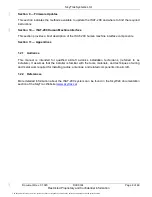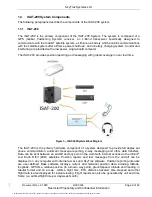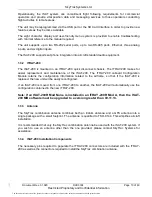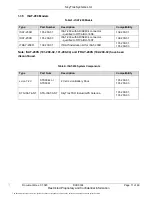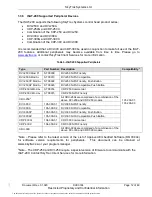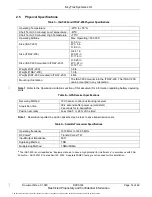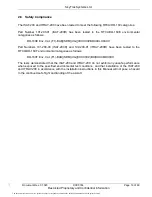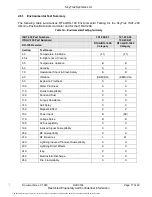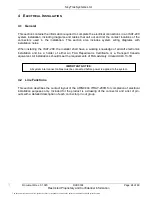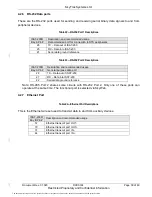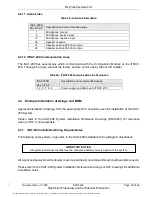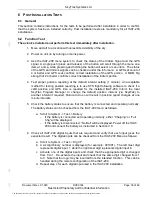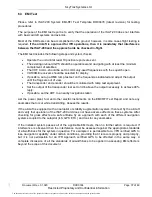
SkyTrac Systems Ltd.
Document Rev. 01.020
DOC0334
Page 22 of 49
Restricted Proprietary and Confidential Information
3.8.2 Antenna Installation Instructions
The combination antenna must be installed at least three feet away from any other GPS
antenna.
It is imperative that the antenna be mounted outside, as high as possible, in a horizontal
position on the aircraft, attempting to achieve a 360-degree view of the sky with minimal
obstructions.
The use of RG-400 low-loss coaxial cable restricts the maximum length of the cable to 18 ft. If a
longer run is required, use lower loss coax cable such as EMTEQ PFLX240-500 (recommended) or
ECS 311501 and refer to manufacturer
’s specifications for attenuation at 1.6 GHz. Attenuation of
equal to or less than 3 dB is required. The bond between the airframe and the antenna needs to be
10 milliohms or less.
Prepare the mounting location by drilling holes in the aircraft skin or through a mounting plate. Use a
doubler plate of 4 x 6 inches if the antenna is installed on a non-metallic aircraft surface to create a
ground plane. The plate must have an electrical connection to the antenna ground.
Installation of an antenna on the aircraft should be performed only as defined by the aircraft
manufacturer or in accordance with TC or FAA approved engineering data. Special caution must be
observed when installing antennae in pressurized aircraft.
Note: The combination antenna includes a rubber seal that must be properly installed into the
groove on the underside of the antenna prior to mounting the antenna. This seal acts as an
environmental seal from the outside atmosphere. Any connections that are not protected
from the outside atmosphere by the rubber antenna seal should have an environmental seal
applied to them during installation.
Note: The ARINC connectors supplied on the ITRAY-200R use size 5 coax contacts. The
contacts supplied in the installation kit are for RG400 type cable. SkyTrac Systems
recommends the use of Emteq PFLX240-500 coax cable with a short pigtail using BNC
connectors and RG400 coax cable for longer runs. If using another cable type, then an
adaptor cable may need to be built. Additional regulatory approval will be required if the
cable or connectors used are not specified in the applicable STC.
IMPORTANT NOTE:
This antenna uses an SMA connector for the GPS jack and TNC connectors
for the L-Band or Iridium jack. Immediate damage will occur to the ISAT-200 if either
cable is connected to the wrong coax pin on the ITRAY-200 connector.
The document reference is online, please check the correspondence between the online documentation and the printed version.

